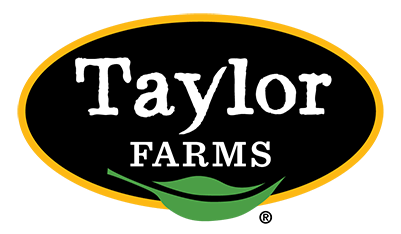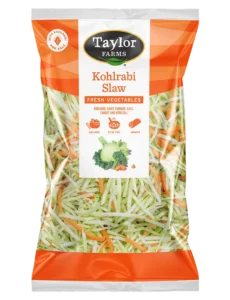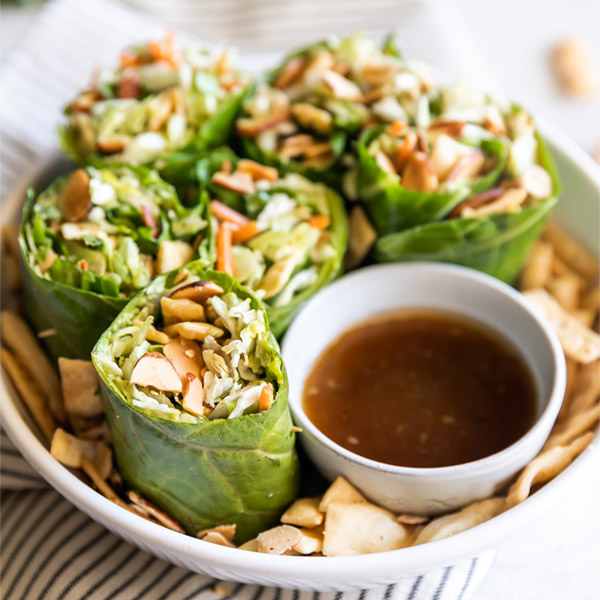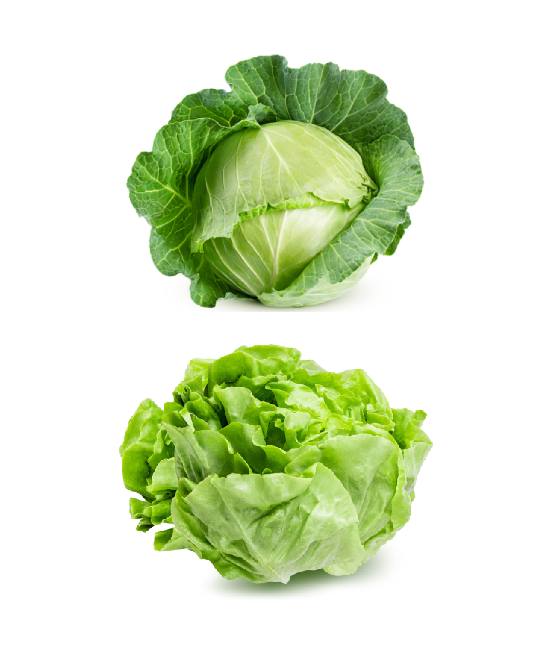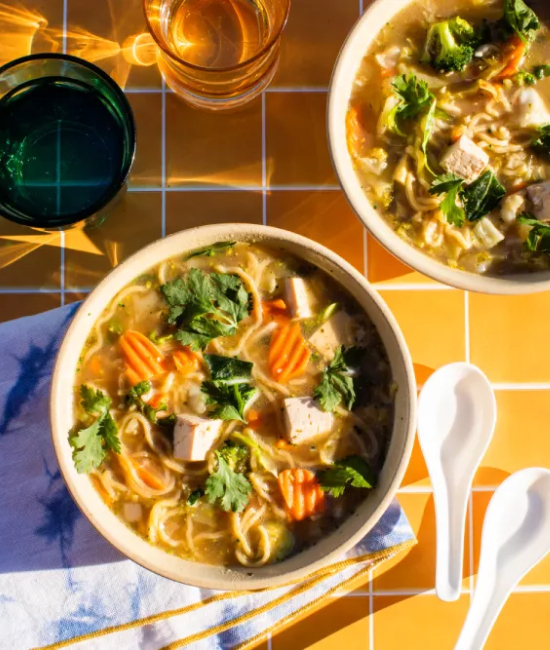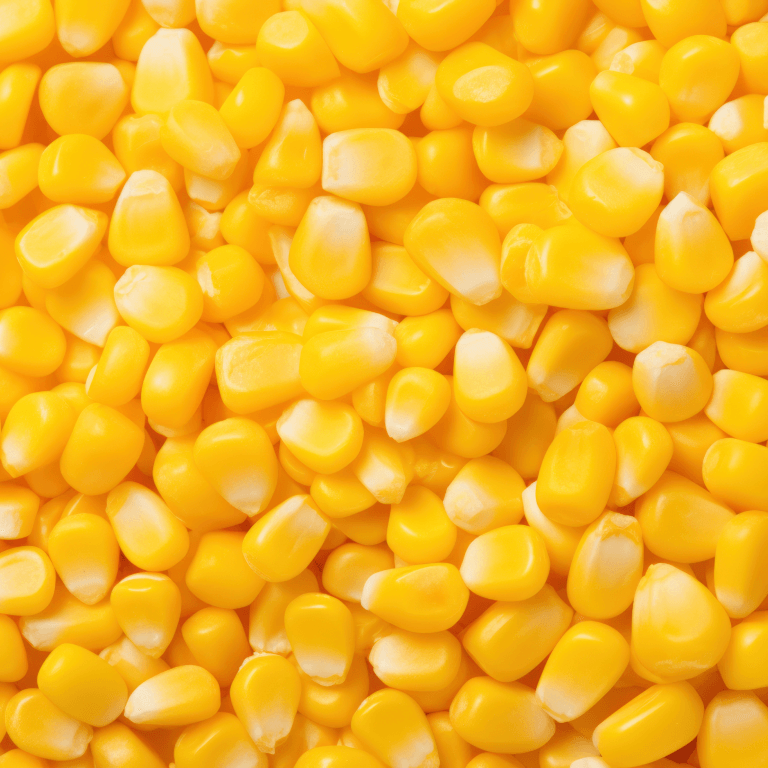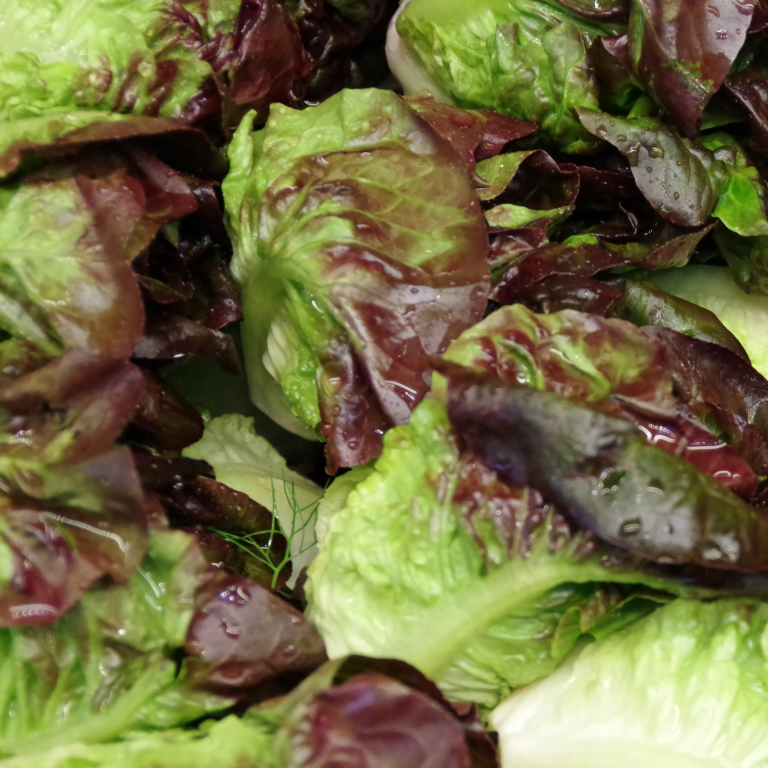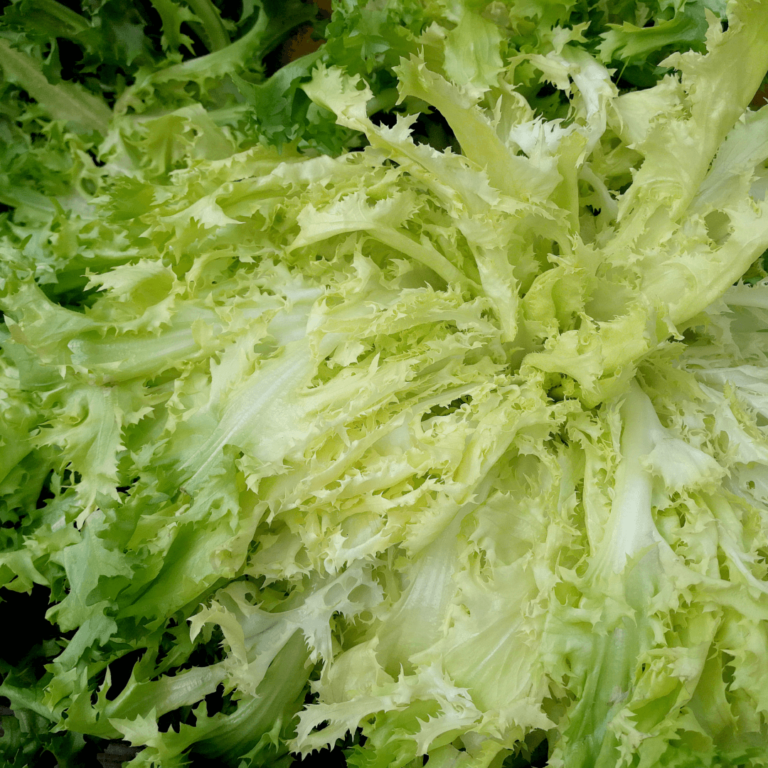Kohlrabi at a Glance
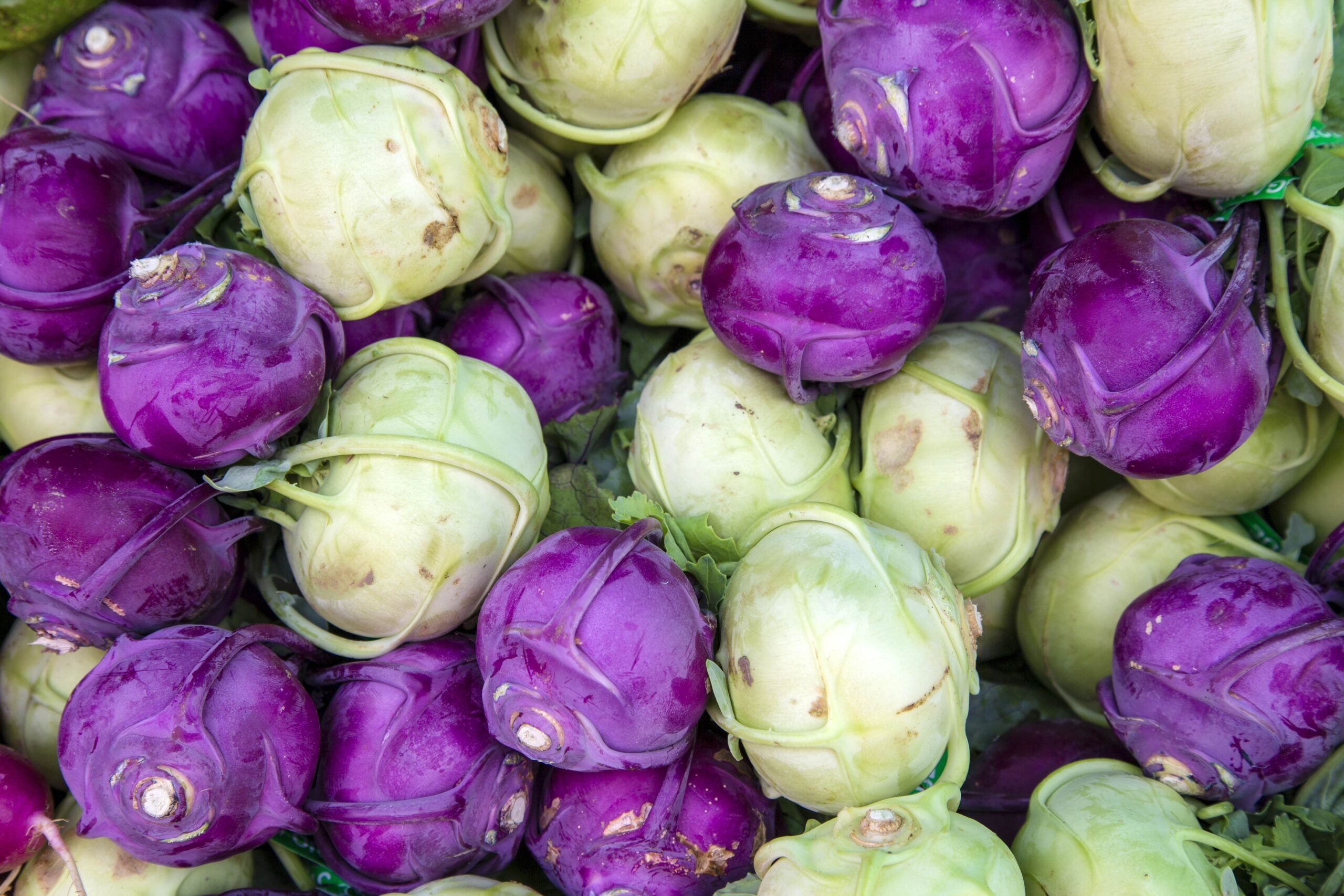
Scientific Name: Brassica oleracea var. gongylodes
Family: Brassicaceae (Cruciferae)
In Season: Typically available in late spring through early fall
Varieties: Green and purple-skinned varieties, such as Early White Vienna and Purple Vienna
Great for: Adding crunch to salads, slaws, and crudité platters, as well as roasting, sautéing, or incorporating into soups and stir-fries.
Kohlrabi Nutrition
35 Calories
5 grams of Fiber
Vitamin C
Common Questions about Kohlrabi
Raw kohlrabi boasts a refreshing, crisp bite with a mildly sweet, turnip-like flavor. Its texture is similar to a crisp apple or radish, offering a juicy crunch that’s perfect for salads or as a standalone snack. The flesh is tender and slightly peppery, retaining its fresh, earthy essence, making it an ideal addition to raw dishes.
When cooked, kohlrabi transforms into a softer, more mellow version of its raw self. It loses some of its crispness but retains a pleasant, subtly sweet flavor. Cooking brings out its sweetness and gives it a creamier texture. The mild taste becomes more delicate, allowing it to absorb accompanying flavors from seasonings or sauces.
Growing kohlrabi
When growing kohlrabi, it’s typically ready to harvest when the bulb reaches about 2 to 3 inches in diameter. The skin should appear smooth and firm, and the bulb itself should feel solid when gently squeezed. If the kohlrabi becomes excessively large, it might become woody or tough, so harvesting at a moderate size ensures optimal taste and texture.
Purchased kohlrabi
When purchasing fresh kohlrabi, look for bulbs that feel heavy for their size, indicating moisture content. The skin should be smooth, without any cuts or bruises, and the leaves, if attached, should be vibrant and fresh. Smaller kohlrabi bulbs tend to be more tender and flavorful, while larger ones may have a slightly stronger taste.
Store kohlrabi in the vegetable crisper of the refrigerator. Remove any attached leaves, as they tend to draw moisture away from the bulb. Place the bulbs in a perforated plastic bag or wrap them in a damp paper towel to maintain their moisture without causing sogginess. Properly stored kohlrabi can keep for up to several weeks. However, it’s best to use it within a week or two for optimal taste and texture. If you’ve already cut or prepared it, store the pieces in an airtight container or sealed plastic bag in the fridge, typically around 3-4 days.
Yes, but it’s recommended to blanch the kohlrabi before storage. Properly frozen, blanched kohlrabi can maintain quality for about 10-12 months. However, its texture might become softer upon thawing, making it better suited for cooked dishes.
Kohlrabi is cultivated across several different continents, thriving in both temperate and cooler climates. Its origins trace back to Europe, particularly Germany, where it gained popularity. Today, it’s widely grown in European countries like Italy, France, and the Netherlands. Additionally, it’s cultivated in North America, notably in the United States and Canada. Asian countries such as China and India also cultivate kohlrabi, where it’s integrated into regional cuisines.

How to cook & serve Kohlrabi
Roasting: Roasting kohlrabi brings out its natural sweetness and offers a delightful caramelized flavor. Toss cubes or slices with olive oil, salt, and pepper, then roast until tender and golden brown at the edges.
Sautéing: Sautéed kohlrabi absorbs flavors well and develops a slightly crispy texture. Cook it in a skillet with garlic, herbs, or spices for added depth and serve as a side dish or incorporate it into stir-fries.
Steaming: Steaming retains kohlrabi’s nutrients and subtle taste while maintaining its crispness. Steam until tender but still slightly firm, then serve as a standalone side or incorporate into mixed vegetable dishes.
Raw: Kohlrabi’s raw form is refreshing and ideal for salads or slaws. Slice or julienne it thinly and toss with your favorite dressing, mix it with other veggies or grate it for a crunchy addition to salads.
Serve cooked kohlrabi as a side dish alongside roasted meats or fish. Its mild flavor makes it a great companion to stronger-tasting proteins. Incorporate it into pasta dishes, soups, or gratins for added texture and flavor. Kohlrabi also pairs well with ingredients like garlic, thyme, lemon, and parmesan, adding depth to its taste profile.
